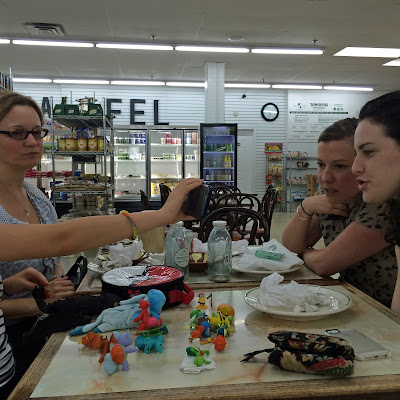I know there are lots of people in the history museum field who are really interested in physically trying out elements of the past--what people wore, how they lived, what they made, but that's never been precisely my thing. But this past weekend I tried versions of 17th and 18th century recipes in my own kitchen and I thought I'd share what made me do it, and what I learned.
The Colony of Avalon, perched on the eastern edge of Newfoundland, Canada, was established in 1621 by Sir George Calvert (the First Lord Baltimore) and is one of the best preserved early English colonial sites in North America. It happens to have, as you can see at the head of the post, a spectacular location. I visited a few years ago, a friend is on their board of directors, and the museum was a participant in last fall's International Experiments in Community Engagement course I taught for JHU Museum Studies, working with my graduate students. All of those things made me pay more attention to it: I followed their Facebook page and began to see them regularly in my Instagram feed.
This is the second summer of their experiment--the Colonial Cookoff. Each week, from their reproduction period kitchen, they post a recipe and invite you to try it. They share their results on social media and invite you to do the same, with the chance to win a weekly prize. I entered the Twice and Thrice Challenge this week, making apple fritters and ginetoes and sharing my results on their Facebook page. Apple fritters, pretty easy; ginetoes, strange, bagel-like lumps with basil, mostly a failure. My ginotoes, top picture; experienced colonial cook ginetoes, bottom picture.
What made me do it?
- Encouragement from my friend Jane. A personal connection remains the one of the most important way to encourage involvement at your organization.
- A website that made it seem fun. There was historical information, but the whole site is written in a lively, accessible voice that shared failures and successes. Not too much detail and very welcoming.
- The fact that I'd been connecting with Avalon all summer long through their Instagram feed. It's there that I got to see, discoveries they'd been making that day (not months or years later), appreciated the enthusiasm of archaeologists for a day (even in less than ideal weather), and wondered about the connections between what was being found on site and the recipes I was reading and experimenting with.
And what are the takeaways, particularly for small museums? I think three primary ones. Make it fun; make it now, not then; and keep at it! Instagram and Facebook posts that come weeks (or months apart) and only feature boring photos of people sitting at an event, or only inviting you to an event, will never hack it. You'll never get me to spend a Friday night making ginetoes that way!









